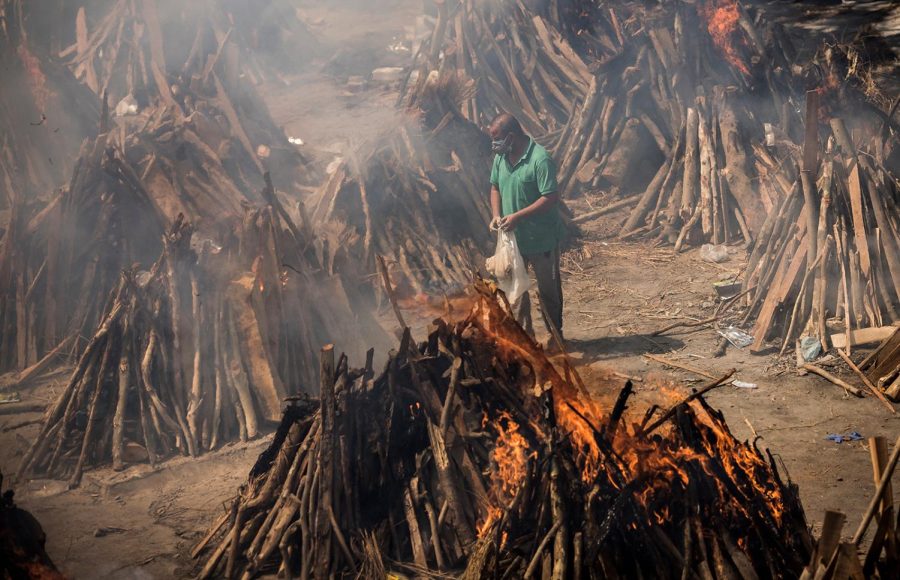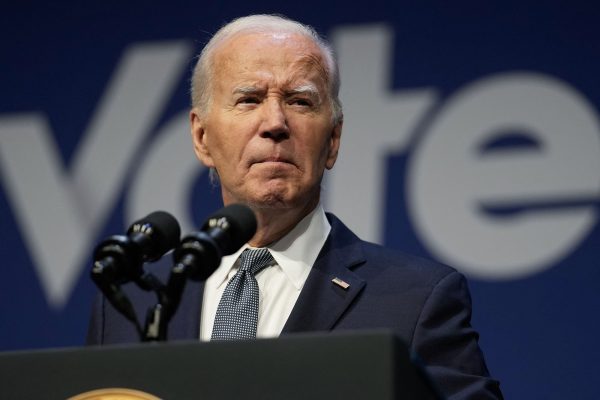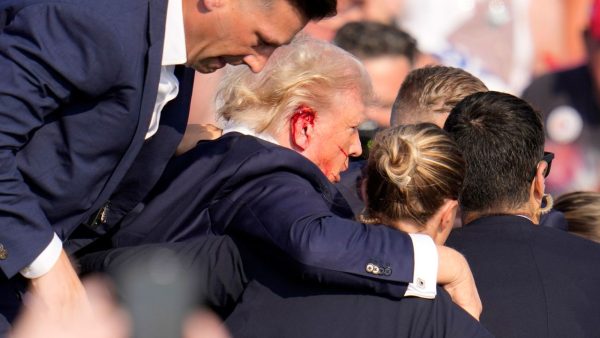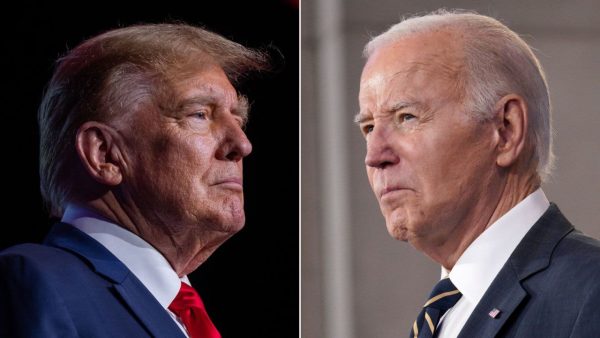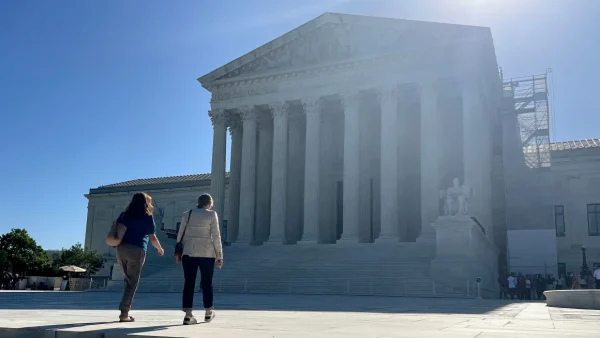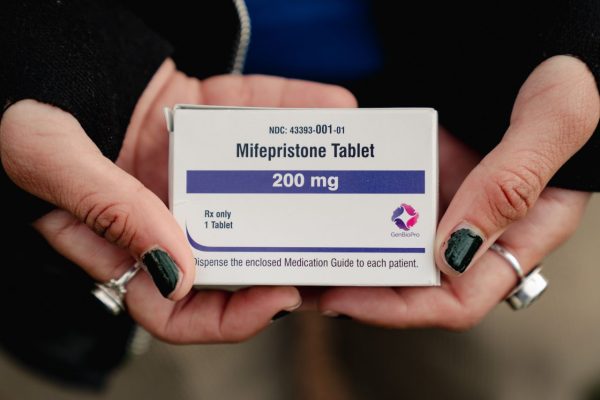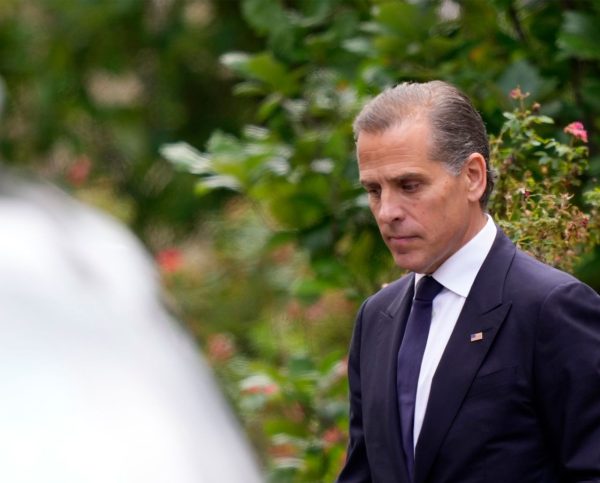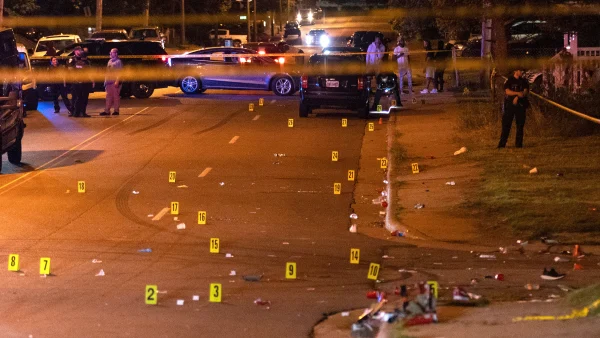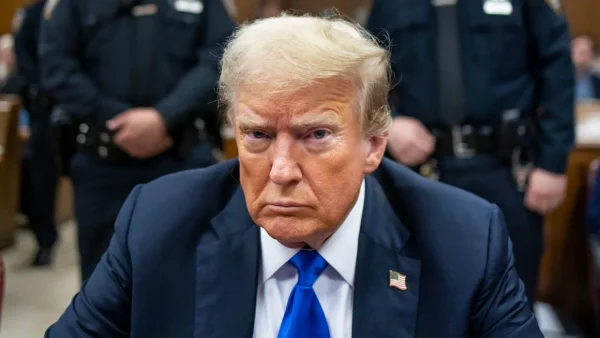India is spiraling deeper into Covid-19 crisis. Here’s what you need to know
NEW DELHI, INDIA – APRIL 24: A man performs the last rites of his relative who died of the Covid-19 coronavirus disease as other funeral pyres are seen burning during a mass cremation held at a crematorium on April 24, 2021 in New Delhi, India. With recorded cases crossing 300,000 a day, India has more than 2 million active cases of Covid-19, the second-highest number in the world after the U.S. A new wave of the pandemic has totally overwhelmed the country’s healthcare services and has caused crematoriums to operate day and night as the number of victims continues to spiral out of control. (Photo by Anindito Mukherjee/Getty Images)
By Jessie Yeung, CNN
April 27, 2021
(CNN) — In February, it seemed like India had gotten Covid-19 under control, with daily cases falling nearly 90% from the peak of the first wave last year.
Now, the country is experiencing the world’s worst outbreak. Daily cases have been rising continuously for the past 10 days; on Monday, India reported 352,991 new cases, breaking yet another record for the highest single-day figure globally.
On the ground, these numbers translate to heart wrenching tragedy. Photos show grieving families dressed in full protective suits at mass cremations, performing last rites surrounded by dozens of other burning funeral pyres. Hospitals have run out of basic medical supplies, with many patients dying due to oxygen shortages. Family members are driving from clinic to clinic, frantically searching for open ICU beds for their loved ones.
The government has been scrambling to respond to the crisis, with countries around the world offering aid. But for now, the outbreak shows no signs of letting up, and experts warn it could get even worse.
“I’m afraid this is not the peak,” said Dr. Giridhara R. Babu of the Public Health Foundation of India on Monday. “The kind of data that we see, (we are) at least two to three weeks away from the peak.”
Others say India may be approaching the peak now, sooner than Babu’s estimate — but with so many ill and so few supplies available, the country will see many more deaths before the second wave subsides.
Here’s what you need to know about the crisis in India.
How did it get so bad?
Cases began creeping upward in early March, but accelerated rapidly — the number of daily cases by the end of the month had jumped six times higher than at the start of the month. That exponential rise has only continued with increasing speed and severity.
The second wave hit so much harder because people were unprepared, experts say. The first wave peaked in September and daily cases declined steadily in the following months; the apparent recovery seemed so successful that the country’s health minister declared in early March they were “in the endgame” of the pandemic.
And the country’s vaccination drive, among the world’s largest and most ambitious, got underway in January.
Residents relaxed Covid-safe practices like social distancing, and authorities were looser in their enforcement. Although some states stayed cautious and made preparations for a second wave, none of it was enough — and nobody foresaw the massive coming wave.
“No one saw the extent of the surge,” said K. VijayRaghavan, principal scientific adviser for the Indian government. “As the previous wave came down, there was in all of us a feeling that this was something which had been dealt with substantially. We saw signs of a next surge, but the scale and the intensity of it was not clear.”
The crisis was made worse by a slow response from the central government. Though some state ministers and local authorities began taking action since February, there appears to have been a vacuum of leadership within the central government, with Prime Minister Narendra Modi staying largely silent on the situation until recent weeks.
Modi finally broke his silence last week, acknowledging the urgency of the situation in an address to the nation, and launched a number of emergency measures to relieve the burden on states and hospitals. But by then, some critics say, the damage was done.
Where is it happening?
New Delhi, the national capital, has been badly hit by the second wave. The union territory of Delhi, where New Delhi is located, was placed under lockdown on April 19. The lockdown has since been extended until May 3.
Hospitals across Delhi are reporting fatal oxygen shortages. On April 23, 20 critically ill patients died at the Jaipur Golden Hospital in Delhi after its supply of oxygen was delayed by seven hours, according to the hospital’s medical director.
“Everything we had was exhausted,” said Dr. DK Baluja. “The oxygen was not supplied on time. It was supposed to come in at 5 p.m. but it came around midnight. People who were critically ill needed oxygen.”
The western state of Maharashtra has also been hard hit, with a number of restrictions in place. Public gatherings have been capped at four people, and public transit across districts and within cities has been limited to essential services and “unavoidable events” like funerals. The entire state is imposing weekend lockdowns through the end of the month.
Several other states also reporting the highest number of active cases include Kerala, Uttar Pradesh, Karnataka, Rajasthan and Chhattisgarh.
Who’s being affected?
Though current Covid patients span nearly every age group, this second wave appears to be infecting young people more than before, experts say.
“The virus and its second wave is hitting the younger people, and even children, in a way it had not in its first wave,” said Barkha Dutt, an author and journalist based in New Delhi. “We’ve met 18-day-old babies that are fighting for their lives inside ICUs.”
Part of it could have to do with India being a young country, said Dr. Lancelot Pinto, a consultant pulmonologist at P.D. Hinduja Hospital in Mumbai. The median age of the population is 27, which means that when there’s a virus affecting the whole country at such a high speed, “there are bound to be a lot of young people coming to the hospital.”
There is the possibility that the higher number of younger patients during this second wave could be related to the virus itself, or its variants — but there simply isn’t enough information or data yet to point to a specific cause.
The highest mortality, however, is still seen among patients aged 70 and above, said Babu of the Public Health Foundation of India — “which means that we need to be protecting the elderly by providing critical care.”
What about the variants?
There is a correlation between the current surge and the rise of the “Indian variant,” according to the country’s top epidemiological experts.
“In Maharashtra we saw (the variant first identified in India) go up, we saw an outbreak. We are seeing it go up in Delhi, we are seeing an outbreak,” said Anurag Agrawal, director of the Institute of Genomics and Integrative Biology, at a webinar on Friday. “These are very important epidemiological correlations.”
“It’s also important to keep in mind that these variants have spread a lot,” said VijayRaghavan. “They constitute, by some estimates, about 60% in one state, Maharashtra.” The proportion of variant cases could be similar in Delhi, as well as other regions in the coming weeks, he added.
Scientists are still studying the Indian variant and conducting genome sequencing to determine what effect, if any, the mutation has.
But some experts warn the new variants pose a clear risk, observable even before formal data has been collected.
Crowded areas in hard-hit cities that saw nearly 50% antibody levels during the first wave are now still reporting positivity rates of more than 25%, said Babu. “Clearly, it means that any protection against the earlier variant is not really useful because of the newer variant spreading faster.”
What’s happening with vaccines?
India is administering two vaccines domestically: the Oxford-AstraZeneca vaccine, known as Covishield in India, and its homegrown Covaxin, developed jointly by Bharat Biotech and the government-run Indian Council of Medical Research (ICMR). In mid-April, India also approved Russia’s Sputnik V vaccine.
The country started its vaccination program in January for health care workers and priority groups — and marked its 100th day on April 25 — with the goal of fully inoculating 300 million people by August. But the program had a sluggish start, facing logistical issues as well as vaccine hesitancy among the population, especially towards Covaxin, which was approved for emergency use before the efficacy data of its third phase trial were released.
As of April 25, India had administered 140.9 million doses of vaccines against Covid-19, according to the health ministry.
Despite administering the most number of coronavirus vaccines in the world after the United States and China, India ranks lower than many countries in per capita vaccination, according to CNN data.
Earlier in April, the central government said it would fast-track emergency approvals for vaccines already approved by the World Health Organization or authorities in the US, Europe, Britain and Japan. Companies still need to apply for approval in India, but they will be exempt from having to conduct local safety trials, expediting the process.
Starting May 1, all residents over the age of 18 will be eligible for vaccination. Private vaccination providers will also be able to sell and administer vaccines.
But state ministers have criticized the new measures, pointing out there simply aren’t enough vaccines even if more people become eligible. The chief minister of West Bengal called the decision “hollow, without substance and a regrettable show of evasion of responsibility by the central government at a time of crisis,” adding it could lead to “unscrupulous mechanisms” regarding pricing in the market.
What is the government doing?
The central government leaped into action in late April as the extent of the crisis became clear.
On April 20, in his address to the nation, Modi said the government was working to deliver 100,000 new oxygen cylinders to states, and that it was suspending all oxygen use for industrial purposes to free up supply for medical use.
Work is underway to increase the number of hospital beds, and to build dedicated Covid hospitals in some cities, he said.
In his address, Modi urged states to avoid imposing lockdowns if possible, calling such measures the “last option.”
India’s health minister said on April 24 that the central government has provided Delhi with more oxygen “than they had asked for,” and urged people not to seek hospitalizations “with the slightest panic — this is not required.”
The next day, Modi expanded on the ongoing efforts, saying his administration would set up 551 oxygen generation plants “in every district to ensure adequate oxygen availability.”
The government is now exploring how to use railways and the Air Force most effectively so that oxygen tankers reach local centers as soon as possible.
How has the world responded?
Countries around the world have stepped up to offer critical aid.
The Biden administration and the US Defense Department will deploy supplies and support to India, including sending ventilators, PPE, rapid diagnostic test kits, and therapeutics, according to the White House and senior officials.
“The United States also is pursuing options to provide oxygen generation and related supplies on an urgent basis,” according to a readout of a call between the two countries’ national security advisers.
The US has a temporary ban in place on exporting raw materials critical for vaccine production — but the White House announced it would partially lift it by identifying “specific raw material urgently required for Indian manufacture of the Covishield vaccine that will immediately be made available for India.”
On Monday, the White House said it could share up to 60 million doses of the AstraZeneca vaccine — which the US currently has stockpiled — with other countries in the coming months, assuming the US Food and Drug Administration issues an emergency use authorization for that vaccine.
However, a senior Biden administration official said that Modi did not make a specific request for vaccines when he spoke with President Biden on Monday, and it remains unclear if the unused AstraZeneca doses will be sent to India. Multiple world leaders have pressed Biden to share doses as other countries have struggled to ramp up vaccinations.
The United Kingdom is also sending 600 pieces of medical equipment to India, including oxygen concentrators and ventilators, the government announced Sunday. The aid follows a direct request by Modi to the UK.
India is also importing 23 mobile oxygen generation plants and containers from Germany, which will be airlifted and arrive in India within a week. The supplies will be deployed to military hospitals treating Covid-19 patients, said India’s defense ministry on Friday.
Neighboring Pakistan, which has a long and hostile history with India, announced it would provide “relief support” including ventilators, PPE and other medical assistance.
“I want to express our solidarity with the people of India as they battle a dangerous wave of Covid-19,” said Pakistani Prime Minister Imran Khan in a statement Saturday. “Our prayers for a speedy recovery go to all those suffering from the pandemic,” said Khan. “We must fight this global challenge confronting humanity together.”
The-CNN-W™ & © 2021 Cable News Network, Inc., a WarnerMedia Company. All rights reserved.


